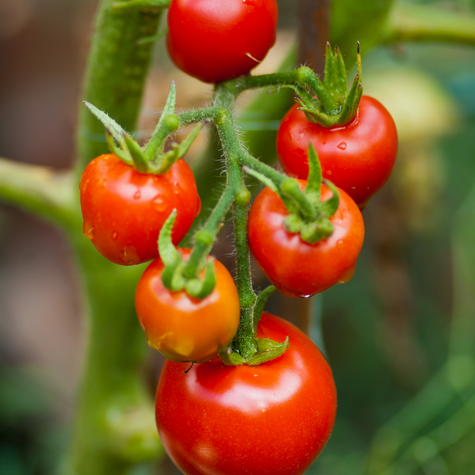It's time to talk: pruning. Pruning your plants is essential to maintaining optimal plant health. It’s also important for the health of your Rise Garden. Read on to learn more about pruning, why it’s important, and 5 tips to help you with pruning your plants.
Pruning your plants may feel like it is counterintuitive but it’s not. Why would I want to prune my plant when I want a big plant with lots of tomatoes? Pruning actually improves plant grow and fruiting!
Top 4 Reasons to Prune your Plants
- Dead Leaves or Branches: Pruning dead plant matter (leaves, stems, and roots) will keep your plant from stressing out. It will also stop it from spending all of its resources (i.e. nutrients) on trying to revive a dying leaf (or stem or root system), and allow it to spend more resources on the leaves that are already thriving. It also helps with pest prevention!
- Air Flow: Pruning improves air flow, which will stop plants from overheating and getting stressed. Natural air flow also helps with pollination.
- Building an Immune System: Pruning also trains a plant to be healthier, stronger, and more disease tolerant.
- Plant Size: Simply put, your plant is getting too big. It could be shading other plants, extending outside of the Rise Garden, or reaching the light panels at the top of the garden. You’ll want to prune a few of the branches that are in the way.
Why does pruning benefit your Rise Garden system?
Your plants need equal access to resources (ie. water, light, fresh air, etc.). If you don’t maintain a healthy Garden, some plants could start to suffocate each other and they could end up stunted or die.
Here are a few reasons to prune your plant for the sake of your Garden:
- Pruning keeps your Garden clean, which means less frequent cleaning.
- When dead plant matter enters into your plumbing, it can attract mold and pests.
- Pruning keeps the size of your plants optimal, which allows for you to grow more plants at once.
- Pruning keeps your plants away from your LED Grow Lights and other parts of the garden, which produce heat and burn your plants.** We recommend making sure your plants are kept at least 1-2 inches away from the Garden lights.
**This point is particularly important, because many reports of Grow Light failures are related to plants that grow too large and interfere with the normal functioning of the Garden’s system. In some cases, this could void the warranty of your Garden.
5 Tips for Pruning your Plants
We want your pruning efforts to be successful so we sat down with our Director of Research and Development (aka plant scientist), Angelo Kelvakis, to gather a few helpful tips that will keep your plants happy and thriving.
- Always use sharp scissors to cut leaves and branches. You don’t want to leave any rips or tears on your plants because it can lead to disease.
- When you cut off a leaf or a section of a plant, make sure to cut as close to the base of the main stem as possible, rather than at the bottom of the leaf. If you leave a stem without a leaf, the plant will waste energy trying to send nutrients to a leaf that doesn’t exist. This could stress out your plant or even stunt its growth.
- For shorter harvest plants (30-60 days to harvest), such as basil, you should only have to prune once or twice in its lifetime. For longer harvest plants (60-100 days to harvest), such as tomatoes or peppers, you should prune every month to keep your plant happy and organized.
- You should never prune more than 20% of your plant each time that you harvest.
- The 20% rule also applies to roots! Sometimes pruning your roots is necessary for water flow or potentially a dead portion of the roots. If that’s the case, start small. The less you prune, the better.
Recently, Angelo dedicated a monthly AMA to pruning—including tips and tricks for success. You can watch the video here.



